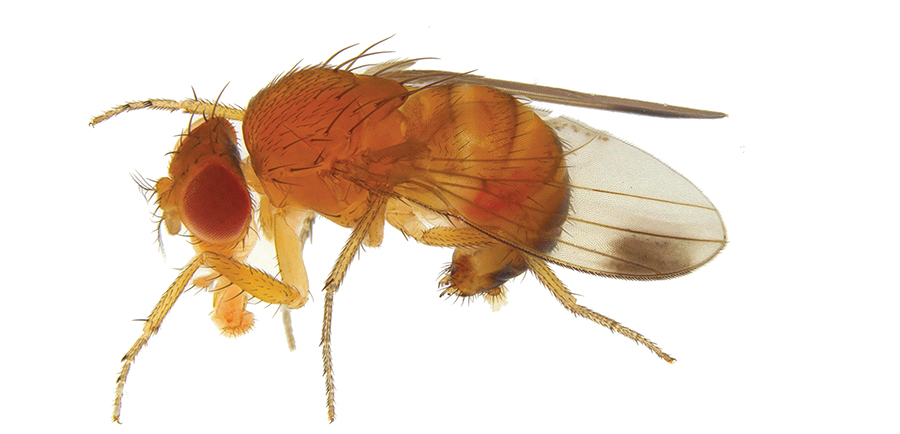The blueberry gall midge [(Dasineura oxycoccana (Johnson)] is a relatively misunderstood pest of highbush blueberries. The pest is not new to the Fraser Valley, but its prevalence has increased in the past few years, likely due in part to the rapid expansion of planted acreage. In the past, many thought that the blueberry gall midge and the cranberry tipworm were the same pest species. Recent work by AAFC, SFU, and CFIA researchers has shown that although the two pests look identical, they are in fact genetically separate species that do not interbreed. They were, at one time, one species, but have since diverged within the separate crops of cranberries and blueberries.
Biology
The blueberry gall midge adult is a tiny fly about 3mm in length. Adult females emerge in the spring and lay their eggs in young growing tips. A single growing tip can have numerous eggs. Eggs can take only a few days to hatch. Larvae are usually clear or white in appearance. The larvae will feed on the growing tips and go through 3 instars (life stages). Once mature they pupate inside a silken cocoon. Adults emerge from the pupal case within 5-10 days. The total development time from egg to adult takes 2-3 weeks depending on the temperature. This quick life cycle leads to overlapping generations during the summer. The final generation of the year will overwinter as pupae in the soil or leaf litter/mulch.
Damage
After hatching, and while still inside the young growing tip, the larvae (maggots) will feed on plant juices. This leads to curled leaves, stunted growth and even necrotic black tips. These larvae are extremely difficult to see with the naked eye, although not impossible. When scouting, a hand lens is recommended. When these tips die, the plant will compensate by starting to sprout and grow from the next node down the branch or stem. This causes excessive branching which can be especially problematic in younger plantings. Economic damage (yield loss) has not been directly measured, but it does cause loss by reducing plant vigour. There is some evidence that the larvae will also feed on and damage young flower buds, but this is hard to notice as the damage to these buds looks like winter damage.
Management
Control thresholds have never been established for mature plantings, but growers should keep track of the amount of damage on a yearly basis and watch for increases or decreases. Control is most important on younger plants as excessive branching at this stage leads to hard-to-manage plants later on. Control may be necessary in severe cases. Currently, there are two insecticides registered for control of blueberry midge in highbush blueberries.












